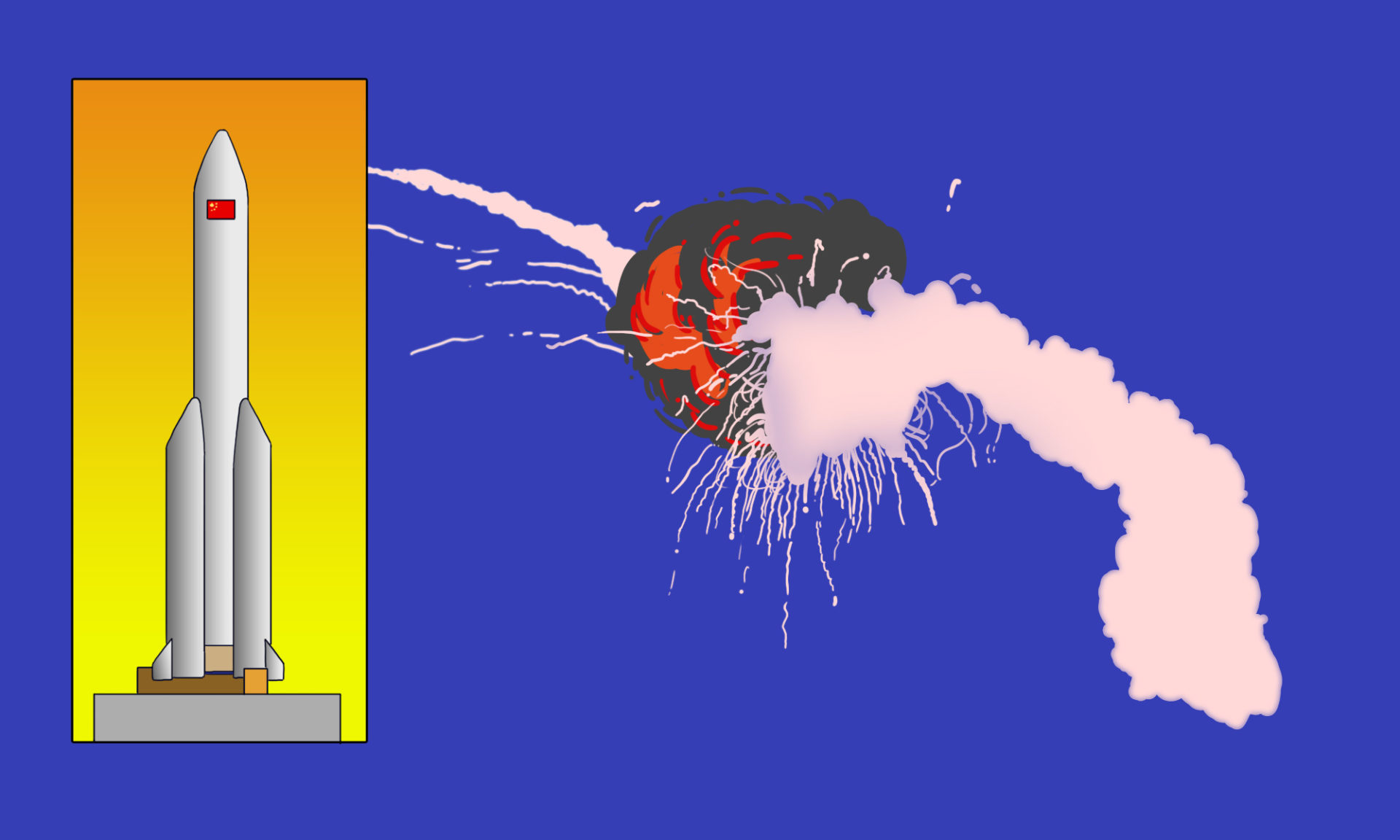China’s hurtling space junk again draws NASA’s ire
The debris from China’s recent rocket launch has fallen into a sea off the coast of the Philippines, sparking safety concerns and stoking geopolitical tensions over a growing amount of space junk.

Remnants of a Chinese rocket launched last week hurtled back into Earth’s atmosphere on Sunday, prompting a stern rebuke from the United States’ National Aeronautics and Space Administration (NASA) over how Beijing handles its space junk.
The Chinese Manned Space Agency said in a post on Weibo that most of the debris of the Long March 5B rocket had burned up on reentry over the Sulu Sea, a body of water between Borneo and the Philippines, after earlier announcing that the booster would be allowed to fall unguided.
- The rocket was used to boost the launch of the second of three parts that will create China’s new Tiangong space station.
- U.S. Space Command confirmed that the rocket reentered over the Indian Ocean at approximately 10:45 a.m. MDT (12:45 p.m. EST) on July 30, stating that it would refer to China for further details.
- Social media users in the region documented the dazzling return, with some mistaking it for a meteor shower or a comet.
Though there was no reported damage, according to a Philippine official per the Associated Press, the small risk that the falling debris could have hit a populated area drew many concerned watchers to track the rocket’s trajectory since its launch.
- Other orbital rockets generally use “controlled reentry” to steer the big core stages of a rocket into the ocean or in unpopulated areas shortly after liftoff, or find some other method of controlling the return.
- By comparison, China’s Long March 5B deploys an “uncontrolled reentry,” where the core of the rocket continues into orbit along with its payload (or the object that it carries, in this case, the Weitan lab module) until atmospheric drag brings it down.
“[China] did not share specific trajectory information as their Long March 5B rocket fell back to Earth,” Bill Nelson, the administrator of NASA, said on Saturday. “All spacefaring nations should follow established best practices, and do their part to share this type of information in advance to allow reliable predictions of potential debris impact risk, especially for heavy-lift vehicles, like the Long March 5B, which carry a significant risk of loss of life and property. Doing so is critical to the responsible use of space and to ensure the safety of people here on Earth.”
- Last year, NASA also accused Beijing of “failing to meet responsible standards regarding their space debris” after parts of an earlier launch using the same rocket model fell into the Indian Ocean.
- In 2020, a Chinese rocket became one of the largest pieces of space debris to plummet toward Earth, landing in the Atlantic Ocean.
“The accusations by the U.S. official and the so-called experts are neither professional nor fact-based,” Chinese Foreign Ministry spokesperson Zhào Lìjiān 赵立坚 stated at the ministry’s daily press conference (in English, Chinese): “The competent authorities in China have been closely tracking it and releasing the orbital parameters of the rocket remnants on a daily basis, and sharing information in an open, transparent and timely manner to the international community.”
- Meanwhile, state-run Global Times published an op-ed accusing the U.S. of a “sour grapes” mentality.
More falling space junk is likely to come: Beijing released in January a record-breaking plan to launch over 50 rockets and send more than 140 spacecraft into Earth’s orbit this year. Of those spacecraft, the third and final laboratory module to complete the construction of China’s space station is set to be launched using the same type of rocket in October.






